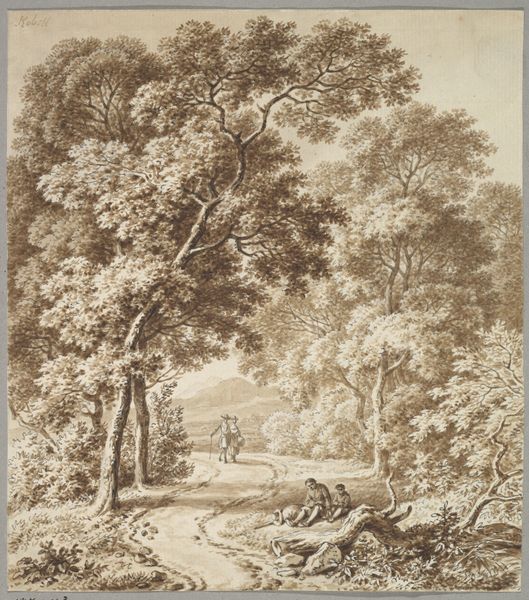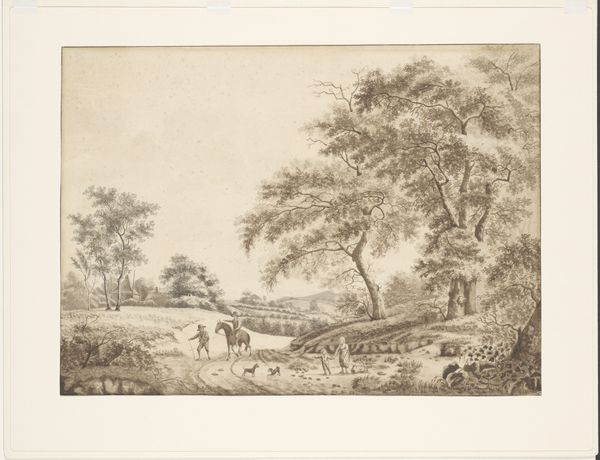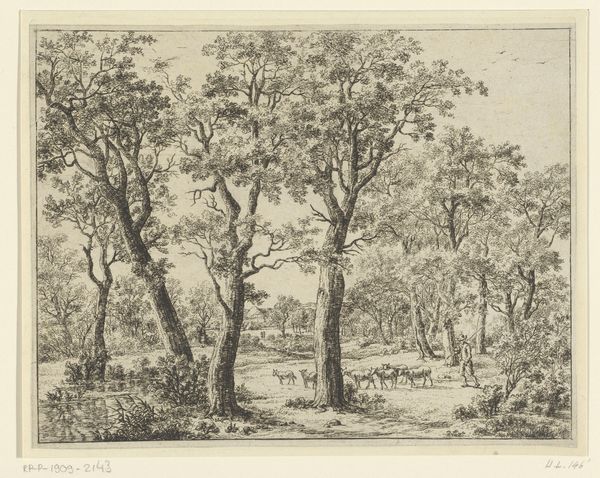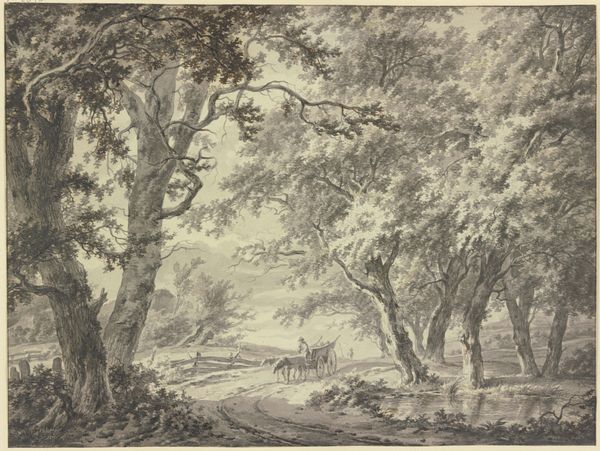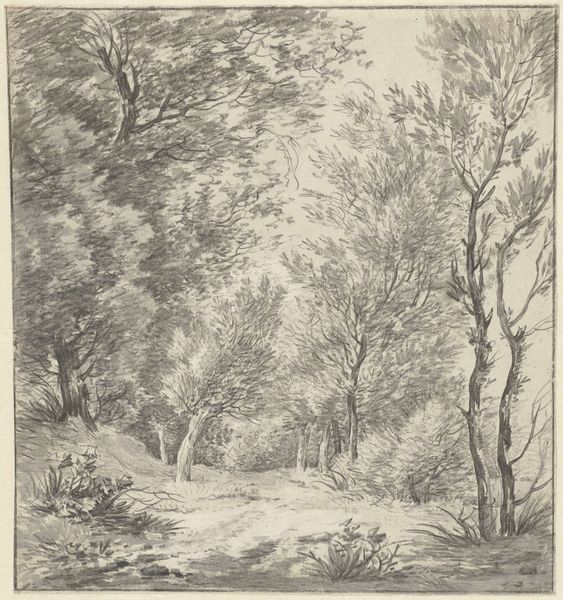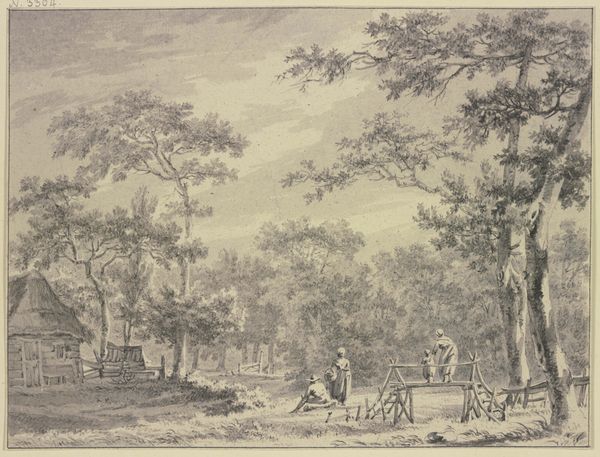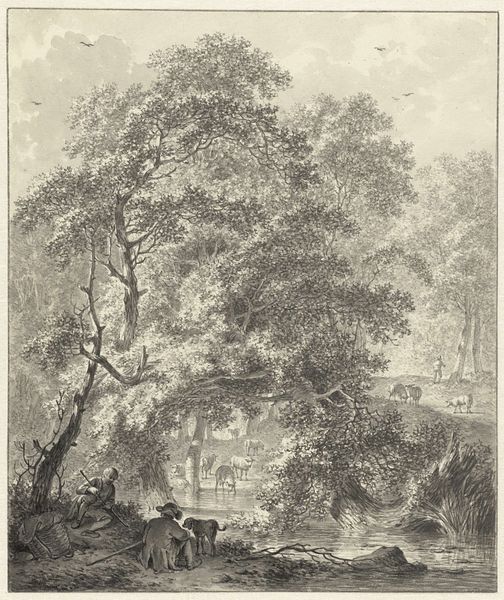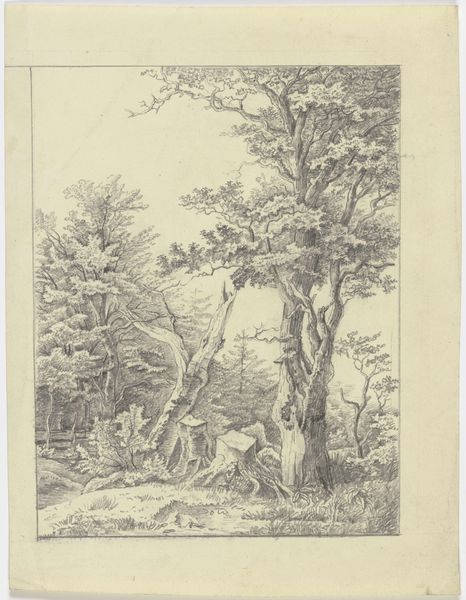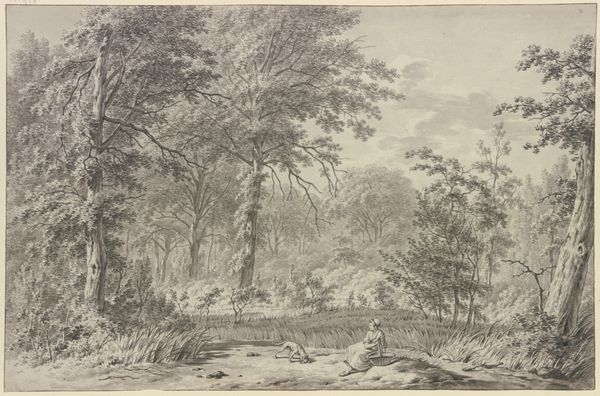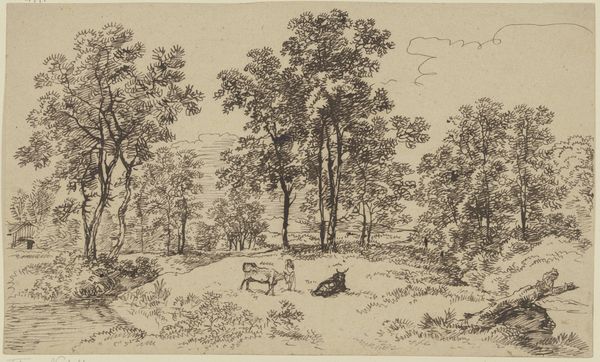
Landschap met rustende wandelaar en een hond die water drinkt 1800
0:00
0:00
wouterjohannesvantroostwijk
Rijksmuseum
drawing, pencil
#
portrait
#
drawing
#
pencil sketch
#
dog
#
landscape
#
figuration
#
romanticism
#
pencil
#
pencil work
Dimensions: height 293 mm, width 221 mm
Copyright: Rijks Museum: Open Domain
Curator: What a serene vista. My first impression is one of calm—a moment captured outside the hustle. Editor: Indeed. This is "Landscape with Resting Walker and a Dog Drinking Water" by Wouter Johannes van Troostwijk, created around 1800. It's a pencil drawing, currently held at the Rijksmuseum. Curator: The dog drinking... it's more than just an anecdotal detail. Notice how its posture mirrors the bent trees; the need for sustenance, for rest, mirrored in the human figure nearby as well, and the slanting thatch roof, even the little wisps of smoke from the chimney. It's all tied to something elemental. Editor: It speaks to the Romantic era's fascination with nature and its symbolic mirroring of human emotion, though executed here with almost photographic fidelity, very progressive. I wonder what kind of audience this work aimed to address at the time? The rural romanticism contrasts so starkly with the industrial growth of the era. Curator: Absolutely. There's also the implied narrative. Who is the figure resting? The smoke rising from the house gives one the sense of a humble, agrarian life, evoking a deep seated yearning for nature. Van Troostwijk plays on that archetype. And the dog adds a deep psychological dimension—loyalty, companionship... aspects central to human existence. Editor: It’s fascinating how, despite being a relatively small pencil drawing, it speaks volumes about the changing social and environmental landscape of its time, wouldn't you say? Curator: I agree entirely. The choice of pencil work really reinforces the natural, unassuming nature of this drawing, it suggests impermanence and fleeting beauty, both natural themes in this kind of work. It is an attempt to wrestle with the relationship between ourselves, animals and landscape. Editor: An evocative microcosm, revealing how socio-political and environmental forces deeply intertwine and affect how the artists and audiences engage with landscapes and those subtle reflections it projects onto society. Curator: Exactly, and it invites the viewers to reflect on their own place within this ever shifting landscape of our internal lives, even today.
Comments
No comments
Be the first to comment and join the conversation on the ultimate creative platform.
